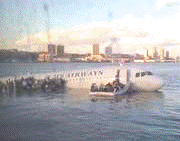Bird Strike Committee Proceedings

Bird Strike Committee-USA/Canada Joint Annual Meeting: 10th (2008)
Date of this Version
8-2008
Document Type
Article
Abstract
The National Wildlife Strike Database for Civil Aviation in the USA became operational in 1995 with the initiation of data entry of all strike reports beginning in 1990. The database contains 82,057 reported strikes from 1990-2007 involving civil aircraft in the USA or USA carriers in foreign countries. About 9,800 of these strike reports have noted damage to the aircraft of which 2,700 indicated the damage was substantial. The database has proven to be a useful source of objective information on the extent and nature of wildlife strikes for personnel at individual airports and for researchers and regulatory agencies at the national level. With the impending requirement for airports in the USA to manage safety risks through a formal Safety Management System (SMS) approach, we propose that the database can be a key element for prioritizing wildlife risks and providing objective benchmarks of the effectiveness of Wildlife Hazard Management Plans (WHMP). We propose that airports use the number of damaging strikes by species over the past 5-year interval, in combination with wildlife count data by species prioritized by likelihood of damage, as a means of guiding management actions to minimize future risk. We further propose that a benchmark or threshold rate of 1.0 damaging strike/100,000 movements per year be established. Any airport exceeding this damaging strike rate in a given year must reevaluate it’s WHMP to reduce the species-specific risk. To enhance the utility of the database in a SMS, improvements are needed in the level and quality of reporting of wildlife strikes. In particular, all strikes need to be reported, and improved efforts are needed in obtaining correct identification of the wildlife species involved in these incidents. During the past 12 years, the National Wildlife Strike Database for Civil Aviation in the USA has provided a scientific foundation for the various efforts underway to reduce the problem of bird and other wildlife strikes with aircraft. Improvements in reporting, as outlined above, will make the database even more useful as part of an SMS to enhance safety at airports nationwide.


Comments
Abstract of paper presented at Bird Strike Committee USA/Canada Meeting, Lake Mary and Sanford, Florida, August 18–21, 2008.